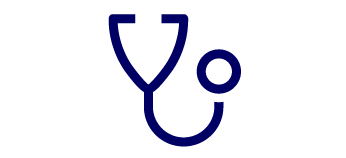Most people will experience a back injury at some point throughout their lifetime. Whether you lift something too heavy, overexert yourself shoveling snow or even tweak something during a sneeze, these injuries can cause a great deal of pain and stiffness. And while many may be quick to assume the worse and want to schedule immediate imaging to diagnose, often, back pain just takes some time to heal.
“The spine is an extremely complex area of the body to treat,” says Kevin Taliaferro, M.D., an orthopedic surgeon at Henry Ford Health. “Swelling or inflammation in this area can cause discomfort as you move since so many muscles and tendons cross over each other in this area. As providers, we need to look more at treating the symptoms someone is experiencing rather than trying to identify every trigger point that could be causing the pain.”
How Your Provider Can Help Treat Back Pain
Because there are many areas in the lower spine that may get fired up as the result of an injury or additional strain, broader treatment measures are used to help your body relax and stretch out so it can heal on its own. Your provider may recommend physical therapy, muscle relaxers, joint injections or additional pain medications. In most cases, where these additional treatments are needed, your symptoms will resolve in 2-6 weeks.
While imaging, such as MRIs and X-rays, are occasionally used in diagnosing back pain, they aren’t as helpful unless your back injury is severe.
“Most adults have degeneration in their backs, meaning we can’t necessarily take what we see on an MRI as the contributing factor for your back pain,” says Dr. Taliaferro. “Rather than using MRIs to justify symptoms, we’d rather understand your symptoms before justifying an MRI.”
Treating Complex Back Pain Cases
In more urgent cases of back pain – when pain has resulted in numbness or weakness in the legs or difficulties walking – imaging may be necessary to look for disc herniation. Often called a slipped disc, disc herniation occurs when one of the soft discs that cushion the bones of the spine gets pushed out of place. If a herniated disc is determined through an MRI, epidural injection treatment can provide relief. Through this treatment, pain medication will be administered into the spine to help reduce symptoms and inflammation.
If your back pain is severe enough to cause difficulties with your balance and coordination or has impacted your bladder or bowel functions, surgery is used to stabilize the spine or create more room for the spinal nerves so they don’t get frequently compressed.

Back And Spine Care At Henry Ford
Managing Your Back Pain At Home
In most cases, very minimal care is needed to resolve back pain – often without needing to see a provider. If you are experiencing pain in your lower back or buttocks, simple at-home treatments can resolve symptoms in a few days. As a first line a defense, try these steps:
- Ice sore or stiff areas
- Take over-the-counter medications like Tylenol or Ibuprofen to manage pain and swelling
- Try a lidocaine patch to minimize discomfort
- Do some light stretches to prevent muscles from stiffening up too much
- Rest, but not for too long
If you aren’t feeling better in a few days, or if the pain begins to travel from your lower back to your legs, see a provider as soon as you can to explore other treatment options.
Reviewed by Dr. Kevin Taliaferro, an orthopedic surgeon who sees patients at Henry Ford Hospital. Henry Ford West Bloomfield Hospital Clinics and Henry Ford Medical Center - Taylor.



